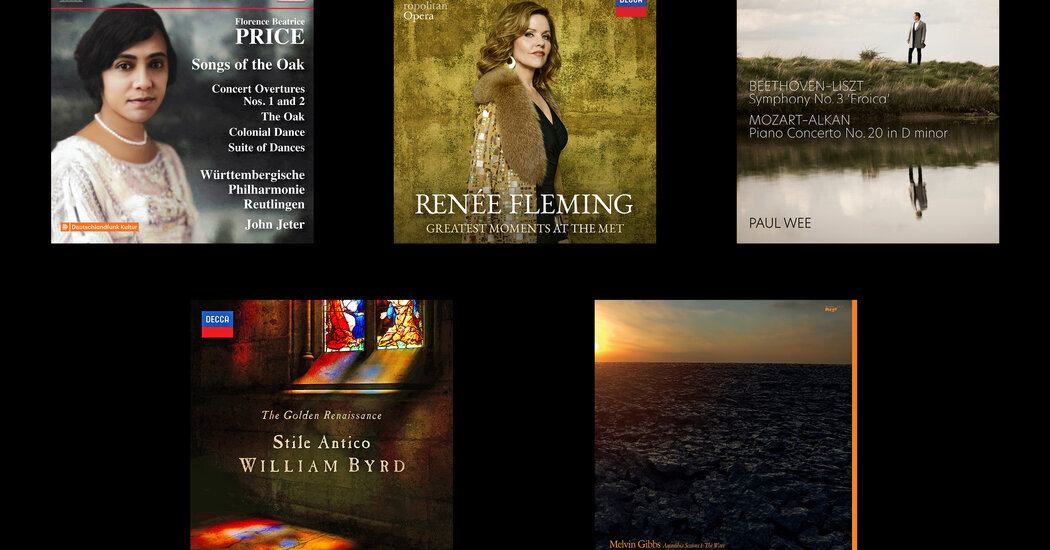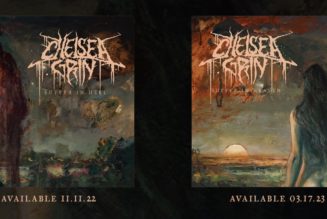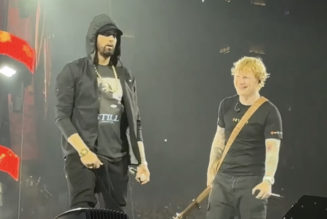
Hits from Renée Fleming’s career at the Metropolitan Opera, an unlikely Mozart and Beethoven recording and Florence Price are among the highlights.
‘Renée Fleming: Greatest Moments at the Met’
Renée Fleming, soprano; Metropolitan Opera Orchestra and Chorus; various conductors (Decca)
The cover of Renée Fleming’s new compilation of live performances from the Metropolitan Opera portrays the company’s long-reigning prima donna in a gilt, Klimt-esque image — the portrait of a luxurious voice.
This set focuses on Fleming’s imperial phase, which lasted from the mid-90s to the late aughts, and wraps her singing in the faintly present resonance of the opera house’s acoustics.
Opening the collection, naturally, is her career-defining “Dove sono,” ineffably tender in its negotiation of the passaggio and extended piano singing, from a 1998 “Le Nozze di Figaro.” Also here are an extravagantly sumptuous “Rosenkavalier” trio; a lambent “Song to the Moon” from “Rusalka”; a shimmery “Depuis le jour” from “Louise”; and an achingly etched “Willow Song” and “Ave Maria” from “Otello,” which left the audience in rapt silence when I saw it in 2008. Her legato clears a path through the difficult-to-finesse English texts of “Peter Grimes” and “Susannah.”
There is also evidence of old complaints. At times, Fleming sounds driven to fussiness out of boredom or maybe even facileness, and minor Bellini and Rossini dramas wasted opportunities to mount company premieres suited to her talents.
A few famous colleagues make appearances — most touchingly, the much-missed baritone Dmitri Hvorostovsky, who died in 2017. Fleming’s satiny Tatiana, from “Eugene Onegin,” is represented not by the Letter Scene, a soprano showpiece, but by the arresting final scene with his Onegin. As wretched, would-be lovers, their cushioned timbres purr with sound — luxurious, yes, but also a moment of golden-age magic. OUSSAMA ZAHR
Beethoven-Liszt, Symphony No. 3 ‘Eroica’; Mozart-Alkan, Piano Concerto No. 20
Paul Wee, piano (BIS)
Let me try to explain just how implausible this recording is. Paul Wee is an Oxford-trained barrister, in the British parlance, who works in the tough world of London commercial law — litigation, arbitration, drafting, that sort of thing. His legal biography adds that “in his spare time, Paul is a keen pianist.”
A fair few lawyers might describe themselves that way, if they play a bit of Bach to wind down at night. But Wee is not that kind of “keen pianist.” He trained for a while at the Manhattan School of Music and now makes recordings of works that are so difficult, most concert pianists wouldn’t dare play them in public. He made his debut on the BIS label in 2019 with the music of Charles-Valentin Alkan, then followed that up with a double-disc set of works by Sigismond Thalberg. He has said that he sees Marc-André Hamelin as something of an idol in terms of repertoire choices; it’s not too much to say that he plays like him, too.
On this third Wee album are Alkan’s transcription of Mozart’s stormiest piano concerto and Liszt’s rewriting of Beethoven’s “Eroica” Symphony. The technical facility is stupendous, and seemingly fearless, but what is just as impressive — particularly in the Beethoven — is Wee’s basic musicality: his clean, meaningful delineation of textures, his feeling for overall architecture. This “Eroica” may be the freshest, most spirited new Beethoven recording I’ve heard in a while. DAVID ALLEN
‘Anamibia Sessions Vol. 1: The Wave’
Melvin Gibbs (Editions Mego)
How to categorize the veteran bassist and composer Melvin Gibbs? He was prominent in New York’s No Wave and avant-garde jazz scenes of the 1980s; he played hard rock with Henry Rollins in the ’90s. This century, he has interpreted graphic scores by Christian Marclay and contributed to multiple improvising ensembles, including Zig Zag Power Trio and Harriet Tubman. His solo compositional work can draw inspiration from the study of global religious traditions as well as a regional locus of American hip-hop.
Thankfully the Austrian label Editions Mego takes an expansive view of Gibbs’s talents, adding his new album to its distinguished roster of electronic music projects. On this short, vivid release, he is credited with compositions and sound design, with no mention of the bass per se, even though he still supplies plenty of low-pitched sonorities here. In the opening “Future Blues,” listen for how the regular, rumbling waves of pulsation rub against trebly tendrils of wet, smacking sound.
Variation among tracks can be subtle, but there are winning contrasts throughout, as when the wobbling, asymmetric feel of “Ibo Code” alternates with the more stable sensibility of “Inner Chamber.” (Droning sounds emerge even more prominently during the subsequent “Life Force.”) You might think of Gibbs’s latest work as existing in harmony with recent “acousmatic” pieces by electronic music peers like Natasha Barrett. However you slot it, it’s a worthy workout for your best pair of headphones. SETH COLTER WALLS
‘The Golden Renaissance — William Byrd’
Stile Antico (Decca)
Sometime in the 1590s, the Tudor composer William Byrd moved to a farm in a village in Essex, living there in semiretirement for the rest of his life. A steadfast Catholic, Byrd, who had been spared the most violent consequences of the Reformation, could now practice his faith in relative privacy among a like-minded community. Much of the liturgical music he wrote during this period — including three Mass settings — was intended for clandestine worship.
The outstanding early music vocal ensemble Stile Antico marks the year’s 400th anniversary of Byrd’s death with this release, which focuses on that late music of one of England’s greatest composers. At its center is the Mass for Four Voices, emblematic of his late liturgical works: spare and compact in expression yet with an unmistakable inner glow. The ending of the Agnus Dei unfurls a chain of lush harmonic suspensions, underlining the fervency of the plea for peace by one who had seen his share of ecumenical conflict.
Also included are a collection of other liturgical works and what Byrd called sacred songs, all sung with Stile Antico’s familiar blend of warmth, clarity and responsiveness to text. The autumnal opening piece, “Retire, my soul, consider thine estate,” seems like an epigraph for the composer’s circumstance, and the group sings its final phrase with transporting quiet: “Thy days will seem but dreams, thy hopes but fables.” DAVID WEININGER
Florence Beatrice Price: ‘Songs of the Oak’ and More
Württembergische Philharmonie Reutlingen, John Jeter, conductor (Naxos)
The conductor John Jeter has played a significant role in the campaign to popularize Florence Price’s long-languishing music. He has recorded accounts of her three extant symphonies, and he continues to investigate her lesser-known orchestral compositions.
This time, he does so with the Württemberg players, who navigate this idiom well; in the two concert overtures that kick off this set, Price’s quotations of spirituals come across strongly. (Check out the take on “Go Down, Moses,” in Concert Overture No. 2.) Even more impressive is “The Oak,” from 1943, in which Jeter leads the players through an exquisitely gloomy opening and shattering climaxes. You may, as I did, nod in agreement with the invocation of Wagner in the album’s liner notes, by the musicologist Douglas Shadle.
As Shadle notes, Price’s “Songs of the Oak” — a separate piece, also included here — has long been confused with “The Oak.” It’s a mistake that even streaming services are making with this recording. (“Songs” comes before “The Oak” on the track list.) So, the campaign to clarify every corner of Price’s catalog is still an active one. Good thing Jeter and the Naxos American Classics series are on the case. SETH COLTER WALLS








